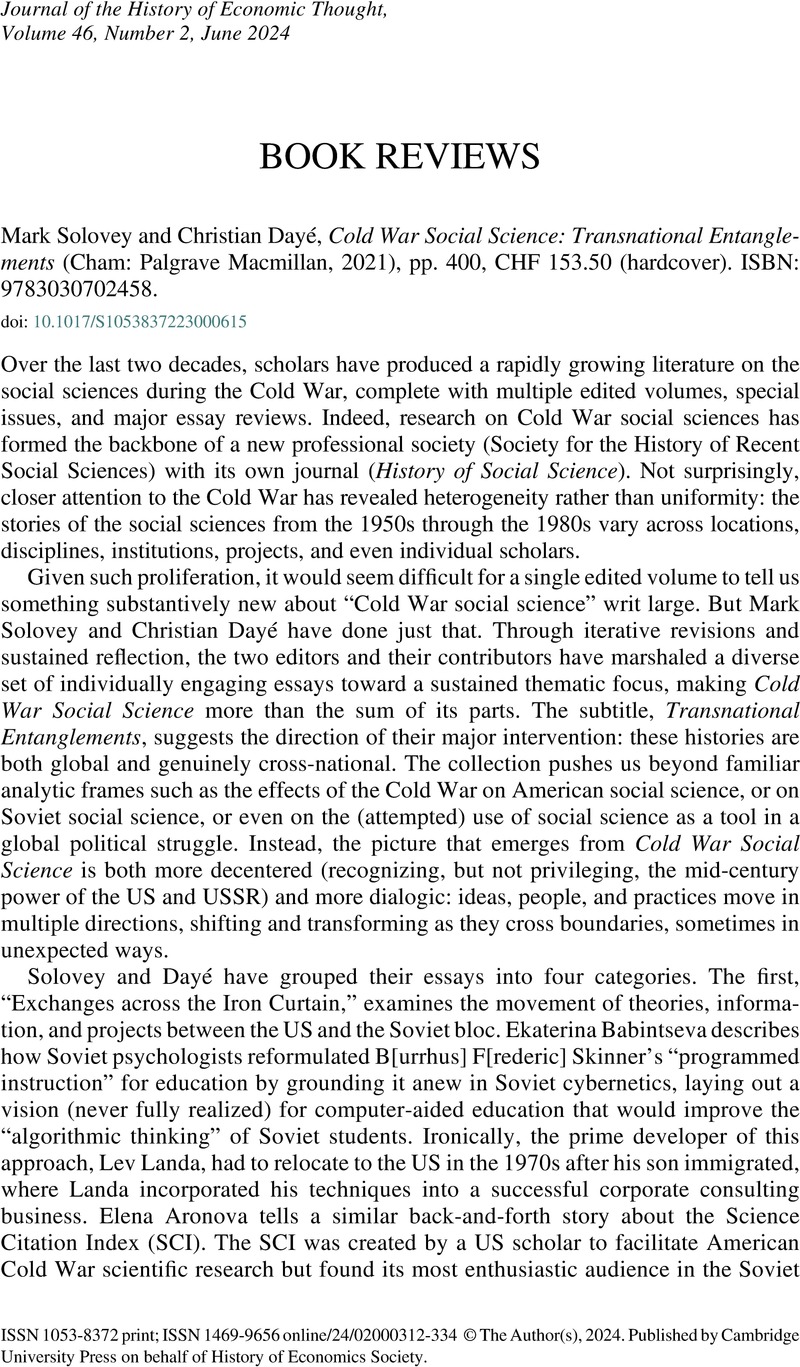No CrossRef data available.
Article contents
Mark Solovey and Christian Dayé, Cold War Social Science: Transnational Entanglements (Cham: Palgrave Macmillan, 2021), pp. 400, CHF 153.50 (hardcover). ISBN: 9783030702458.
Review products
Mark Solovey and Christian Dayé, Cold War Social Science: Transnational Entanglements (Cham: Palgrave Macmillan, 2021), pp. 400, CHF 153.50 (hardcover). ISBN: 9783030702458.
Published online by Cambridge University Press: 08 February 2024
Abstract
An abstract is not available for this content so a preview has been provided. Please use the Get access link above for information on how to access this content.

- Type
- Book Review
- Information
- Copyright
- © The Author(s), 2024. Published by Cambridge University Press on behalf of History of Economics Society


